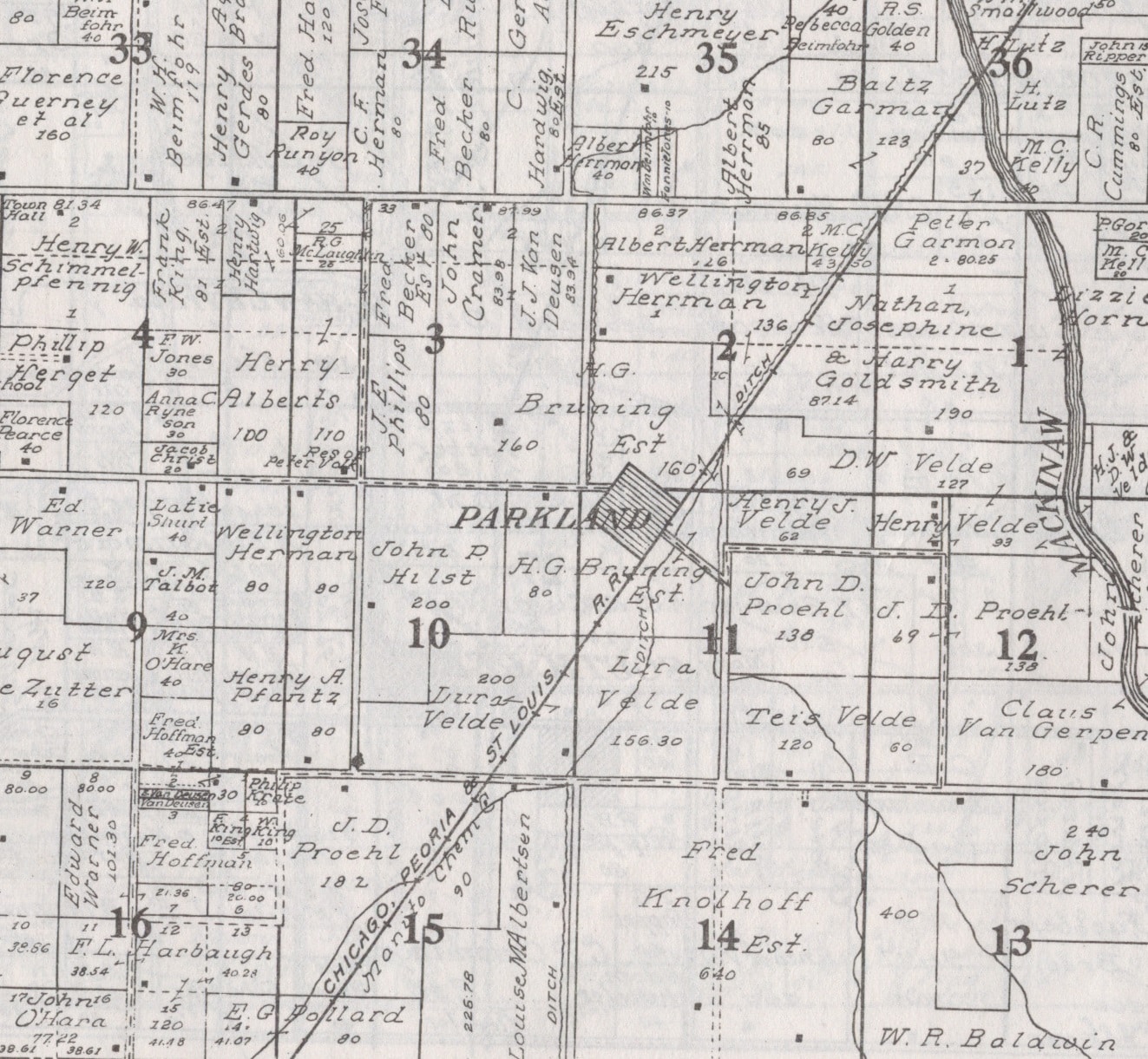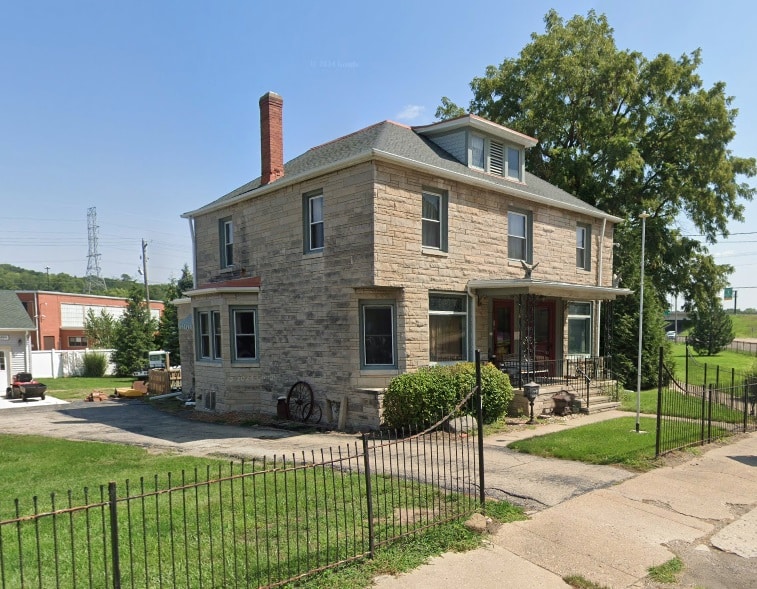Tazewell County’s westernmost township, Spring Lake Township, is the largest township in the county – but is also among the most sparsely populated. In fact, Spring Lake Township is one of the few townships in the county to have no incorporated communities – no incorporated cities, towns, or even villages.
Spring Lake Township today has a number of unincorporated communities or subdivisions, including Parkland, Talbott, Lakewood Terrace, and Smith-Rakestraw. The oldest of them, Parkland, has the smallest population of the four, having dwindled to a farm and a few homes.


John Drury’s “This is Tazewell County, Illinois” (1954), page 297, offers this description of Parkland:
“Only community of Spring Lake Township is Parkland, which in 1950 had a population of 20. It is located southwest of Pekin on the Chicago & Illinois Midland Railroad and is served by the post office in nearby Manito (Mason County). Among the first settlers of Spring Lake Township were the McLeashes, Hibbards and Claytons. Another early settler was Joseph Offut, who built a log cabin on the border of Spring Lake in the southwest corner of the township.”


Parkland started out in the 1800s as the small pioneer farming settlement of Prettyman, named for Benjamin S. Prettyman on whose farmland the settlement had been established. However, on Sept. 7, 1860, the settlement, which by then was designed as a railroad depot, was formally platted as “Hainesville.” Both the Prettyman and Haines families were early pioneer settlers of Pekin, and Benjamin S. Prettyman, who held great swaths of land in Tazewell County, served Pekin as city attorney and was later elected mayor of Pekin.
Even though the community’s name was Hainesville, the settlement’s Post Office address throughout the latter 1800s continued to be designated as “Prettyman.” In 1899, however, Hainesville was renamed “Parkland” – and this time the U.S. Postal Service went along with the name change. Parkland had its own post office until 1918.


The official plat of Hainesville (Parkland) resembles a checkerboard, with four streets going northwest to southeast (Prairie, Main, Highland, and South) and four intersecting streets going southwest to northeast (First, Second, Third, and Fourth, with the numbers starting at the street along the railroad). There is no trace of most of those streets today. Third Street is today called Parkland Road, while Prairie Street is Spring Lake Road. Aerial photographs today show evidence of a faint trail along what was, or would have been, Fourth Street, and an unpaved footpath exists today along the track of South Street.
The railroad on Parkland’s southeast border still operates today, but it has been long since Parkland has had a depot.













